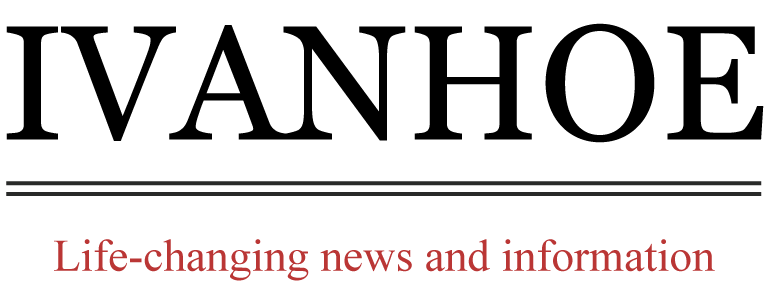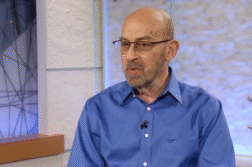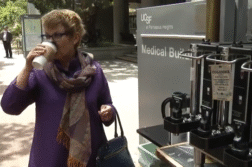SAN ANTONIO, TX (Ivanhoe Newswire) – Nearly half of all women carrying BRCA gene mutations will go on to develop lethal breast or ovarian cancer. But, new research has discovered a method to isolate those dangerous mutations, thereby finding a way to fix them. Pre-Emptive Mastectomies
When BRCA1 and BRCA2 genes work correctly, they repair damaged DNA. If they don’t — genetic mutations occur, increasing cancer risk. Groundbreaking research is studying BRCA gene mutations in the lab to find ways to counteract them.
Weixing Zhao, PhD, assistant professor of Biochemistry at UT Health Science Center explains, “So, basically, we kind of created a particular mutant, and then which is defect the ubiquitin activity of BRCA1, and then, basically can knock down the activity of BRCA1.”
It’s critical for scientists to understand why the genes mutate and how to counteract the resulting effects.
“If it’s really bad, it might indicate that this individual will have some problem, sooner or later, right,” says Prof. Zhao
Because of BRCA’s deadly reputation, women have undergone pre-emptive radical mastectomies to minimize risk. But this study is aimed at developing precisely targeted cancer drugs possibly reducing the need for these surgeries.
“Helping the physician; the patient make a decision.”
BRCA1 studies have resulted in more than 14,000 research papers, but this latest breakthrough recreating BRCA mutations through DNA sequencing for further analysis has real promise in stopping cancer in its tracks.
Contributors to this news report include: Donna Parker, Producer; Bruce Maniscales, Videographer; Roque Correa, Editor.
To receive a free weekly e-mail on medical breakthroughs from Ivanhoe, sign up at: http://www.ivanhoe.com/ftk
Sources:
https://news.yale.edu/2017/10/04/mystery-breast-cancer-risk-gene-solved-20-years-after-its-discovery
MEDICAL BREAKTHROUGHS
RESEARCH SUMMARY
TITLE: A PATH TO REDUCE THE NUMBER OF PRE-EMPTIVE MASTECTOMIES
REPORT: MB #5409
BACKGROUND: Breast cancer is a malignant tumor that originates in the cells of the breast. It is one of the most common cancers among women worldwide, but it can also affect men. Early detection and advances in treatment have significantly improved survival rates. There are about eight different types of breast cancer: angiosarcoma, ductal carcinoma in situ, inflammatory breast cancer, invasive lobular carcinoma, lobular carcinoma in situ, male breast cancer, Paget’s disease of the breast, and recurrent breast cancer. According to the American Cancer Society, over 310,000 women will be diagnosed with breast cancer this year, and over 42,000 will die from it.
(Sources: https://www.mayoclinic.org/diseases-conditions/breast-cancer/symptoms-causes/syc-20352470
https://www.cancer.org/cancer/types/breast-cancer/about/how-common-is-breast-cancer.html)
DIAGNOSING: Signs and symptoms of breast cancer include, but are not limited to: a lump in the breast(s), a nipple that looks flattened or turned inwards, changes in color of breast skin (in fair skinned people, the skin looks pink or red, and in brown or Black skin, it looks darker, or purple or deep red), change in appearance of the breast(s), dimpling of skin around the breast, and/or peeling or flaking of the breast skin. Doctors can diagnose breast cancer with a mammogram, breast exam, breast MRI, breast ultrasound, or a biopsy.
(Sources: https://www.mayoclinic.org/diseases-conditions/breast-cancer/symptoms-causes/syc-20352470
https://www.mayoclinic.org/diseases-conditions/breast-cancer/diagnosis-treatment/drc-20352475)
NEW TECHNOLOGY: UT Health San Antonio has found a way to stop dangerous mutations in the BRCA1 and BRCA2 genes. “The discovery of BRCA1’s role in DNA repair and suppression of tumors was the first evidence that the risk of cancer could be inherited. It was originally thought that mutations in BRCA1 and the related BRCA2 gene might account for 7% to 8% of breast and ovarian cancers, said Patrick Sung, professor of molecular biophysics and biochemistry and of therapeutic radiology and member of the Yale Cancer Center. However, the cancer risk is likely a lot higher because in many cancer cases the expression of the BRCA genes is silenced even though no mutation can be found, he added.”
(Source: https://news.yale.edu/2017/10/04/mystery-breast-cancer-risk-gene-solved-20-years-after-its-discovery)
FOR MORE INFORMATION ON THIS REPORT, PLEASE CONTACT:
Steve Lee
If this story or any other Ivanhoe story has impacted your life or prompted you or someone you know to seek or change treatments, please let us know by contacting Marjorie Bekaert Thomas at mthomas@ivanhoe.com




